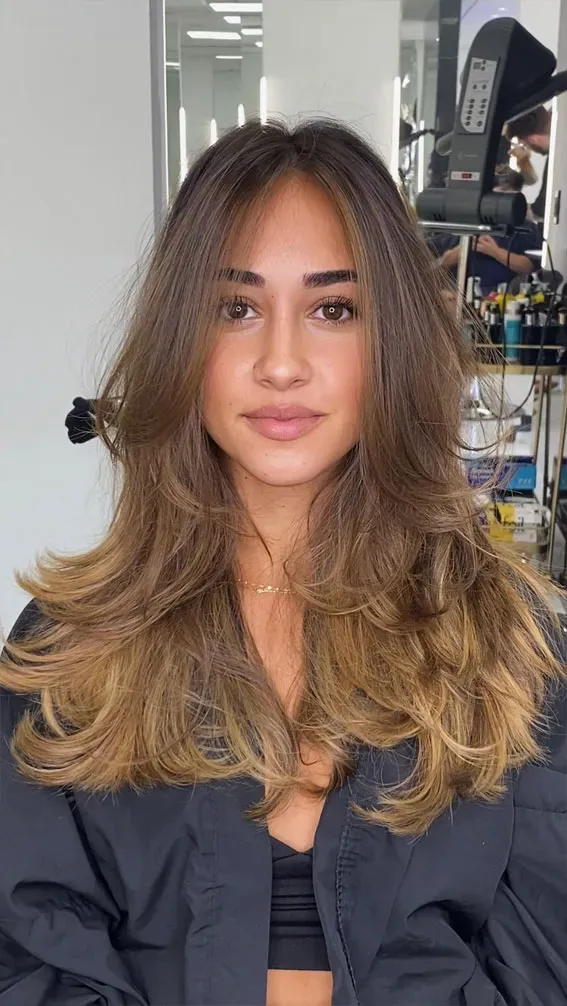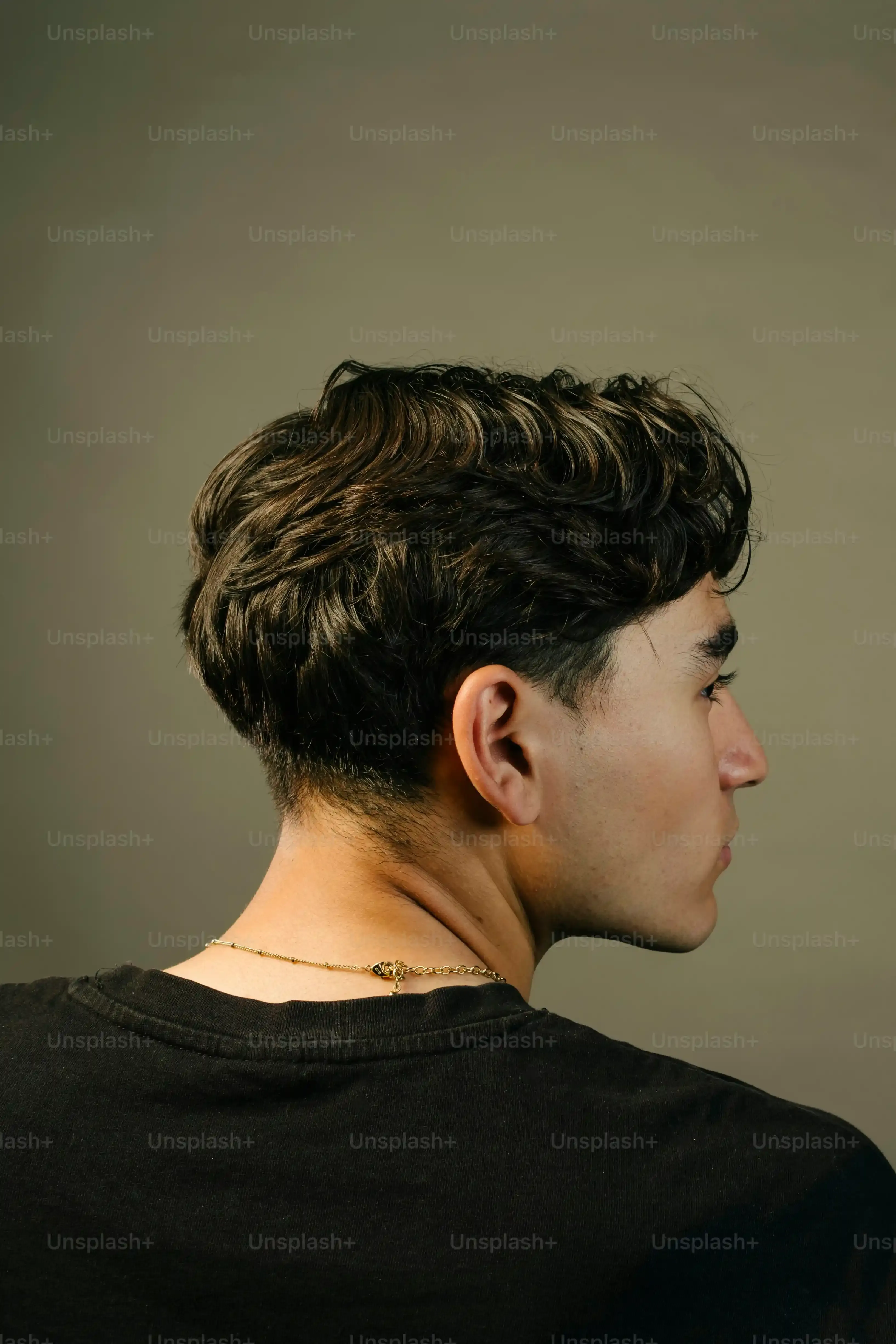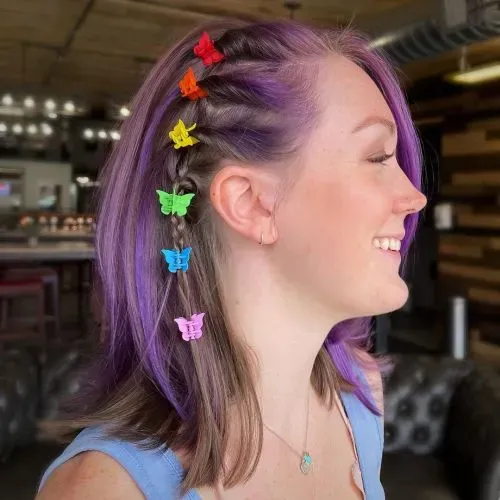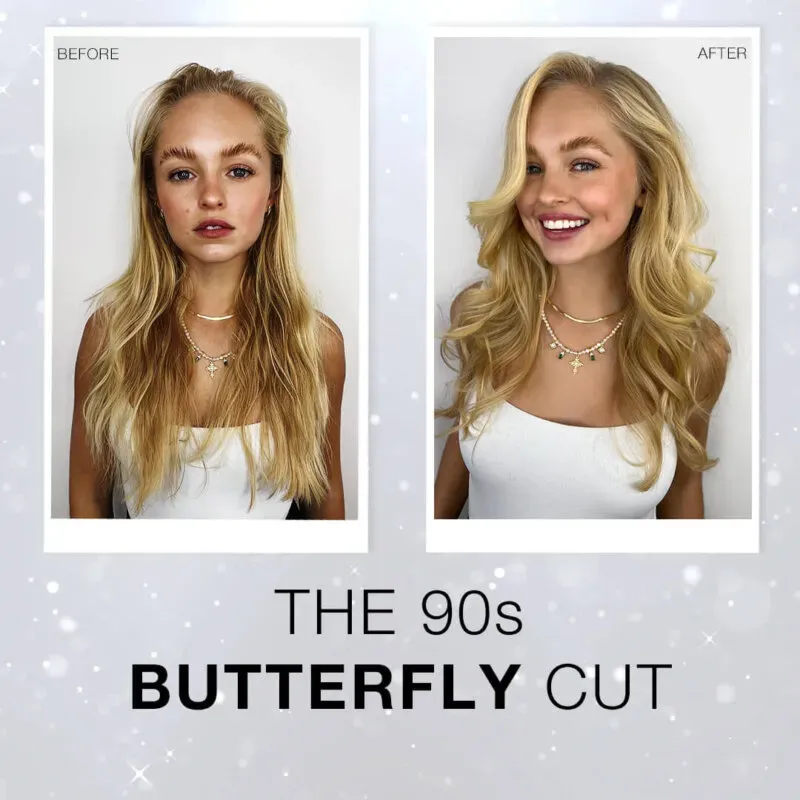Table of Contents
Remember scrolling through old photos or watching 90s music videos and thinking, " their hair had *volume*"? That gravity-defying bounce is back, and it's largely thanks to the return of the 90s butterfly hair cut. This isn't just some random layered look. We're talking about strategically placed, face-framing layers combined with longer layers throughout, designed to create maximum movement and mimic the shape of butterfly wings – hence the name.
What Exactly is the 90s Butterfly Hair Cut?

What Exactly is the 90s Butterfly Hair Cut?
Layers That Take Flight
let's talk about the anatomy of the 90s butterfly hair cut. It's not just layers thrown in haphazardly; there's a method to the madness. Think of it as having two haircuts in one, subtly blended together. The top section of your hair gets shorter, face-framing layers. These are the pieces that really create that lift and shape around your face, often hitting somewhere between your chin and collarbone.
Underneath, the hair remains significantly longer, maintaining the overall length and weight of your style. The magic happens in how these two distinct lengths are connected. A skilled stylist will blend the shorter layers into the longer ones using specific cutting techniques to avoid a harsh, choppy line. The goal is maximum movement and volume, especially around the face and crown, without sacrificing the length you worked hard to grow.
- Distinct dual-layer system (short top, long bottom)
- Face-framing layers are key for lift
- Longer layers underneath preserve length
- Blending is crucial for a seamless look
- Designed for volume and movement
More Than Just Layers
Calling it simply a "layered haircut" doesn't really capture the essence of the 90s butterfly hair cut. It's about the *placement* and *proportion* of those layers. The shorter pieces on top aren't just random snips; they're strategically cut to fall and flick outwards, creating that signature airy, wing-like effect. Imagine your hair having internal scaffolding that gives it bounce and life with minimal effort.
Compared to, say, a traditional shag which has layers all the way through from top to bottom, or a blunt cut with zero layers, the butterfly cut offers a unique balance. It gives you the body and shape of shorter hair around the face while keeping the versatility and appearance of long hair. It's the hair equivalent of wearing a flowy dress that secretly has built-in support; looks effortless, performs hard.
Why the 90s Butterfly Hair Cut Made a Comeback
The Nostalgia Wave and Social Media Fuel
So, why now? Why is the 90s butterfly hair cut suddenly everywhere? Part of it is pure, unadulterated nostalgia. The 90s are having a moment across fashion, music, and beauty. People are craving the looks of that era, maybe because things felt a little simpler, or maybe just because trends cycle. Supermodels like Cindy Crawford rocked variations of this layered look, making it instantly iconic. Now, a whole new generation is discovering it, often through platforms like TikTok.
Short video formats are perfect for showcasing hair with movement and volume. A quick flip of the head or a twirl, and suddenly you see those layers taking flight. This visual appeal translates incredibly well online, leading to viral trends and countless tutorials. It's a look that photographs and videos beautifully, which in our hyper-visual world, is a huge driver of popularity.
Practicality Meets Glamour
Beyond the nostalgia and internet hype, the 90s butterfly hair cut is genuinely practical for a lot of people today. It offers the illusion of serious volume and bounce without requiring you to chop off all your length. For those who want the versatility of long hair – braids, updos, etc. – but crave the shape and lift usually associated with shorter styles, this cut is a sweet spot. It also works surprisingly well across different hair textures, from finer strands that need a lift to thicker hair that needs layers to feel lighter and move. It's a haircut that gives you impact without demanding daily, hours-long styling sessions, which fits our generally busy lives.
Consider how many people grew out their hair during lockdowns. Now they want a change, something fresh, but aren't ready for a dramatic chop. The butterfly cut provides that significant visual change and volume boost while keeping the hair long. It's the hair equivalent of getting a really good jacket with amazing structure; it elevates the whole look with minimal effort.
What's Driving the Butterfly Cut Revival?
- 90s fashion and beauty nostalgia
- Viral popularity on platforms like TikTok
- Desire for volume without losing length
- Versatility across different hair types
- Relatively low-maintenance for the visual payoff
Getting the Perfect 90s Butterfly Hair Cut for Your Hair Type

Getting the Perfect 90s Butterfly Hair Cut for Your Hair Type
Talking to Your Stylist: It's Not Just a Trim
so you're sold on the idea of getting a 90s butterfly hair cut. Awesome choice. But before you just walk into any salon and ask for "layers," let's pump the brakes slightly. This cut is more nuanced than a standard trim. You need to have a real conversation with your stylist. Think of them as the architect of your new, voluminous look. Explain *why* you want this cut – the volume, the face-framing, the nostalgic vibe. Be clear that you're aiming for that specific 90s butterfly hair cut structure, with the shorter, distinct layers on top blending into longer lengths underneath.
A good stylist will assess your hair texture, density, and growth patterns. They'll tell you how the cut will likely behave with your specific hair type. Don't be afraid to ask questions. "Will these layers fall flat on my fine hair?" or "Will this make my thick hair too bulky?" Understanding their perspective based on your hair is crucial to managing expectations and ensuring you both have the same goal in mind.
Tailoring the Layers to Your Texture
This is where the magic happens, or where it all goes wrong, depending on the skill level and communication. The beauty of the 90s butterfly hair cut is its adaptability, but it absolutely needs to be tailored to your hair type. If you have finer hair, the layers need to be cut with precision to create lift without looking sparse. You want fewer, strategically placed shorter layers on top to avoid thinning out the ends. For thicker hair, more layers, perhaps cut with techniques like point cutting or slicing, can remove bulk and encourage movement, preventing that dreaded helmet head look.
Curly or wavy hair? The butterfly cut can work wonders, enhancing your natural texture and providing shape. The layers will help distribute weight, preventing the bottom from looking heavy and lifeless while allowing the top to spring up. However, the length and angle of the layers will need careful consideration to avoid the dreaded triangle shape or layers that just look like shelves. It's all about customizing the technique.
Butterfly Cut Adaptability by Hair Type
Hair Type | Layering Approach | Key Consideration |
|---|---|---|
Fine | Fewer, strategic short layers on top | Avoid thinning ends; focus on lift |
Thick | More layers, techniques to remove bulk | Prevent bulkiness; encourage movement |
Wavy/Curly | Careful length/angle for shape | Enhance natural texture; avoid triangle shape |
Show, Don't Just Tell: Bring References
Seriously, bring pictures. Lots of pictures. Don't just rely on describing the 90s butterfly hair cut verbally. What you think of as "face-framing layers" might be completely different in your stylist's mind. Pull up photos on your phone, rip pages out of magazines, save screenshots from Instagram or TikTok. Show them examples of the butterfly cut on people with similar hair types and lengths to yours. This gives your stylist a clear visual target.
Discuss what you like about each picture. Point out the length of the shortest layers, the overall shape, how the layers blend. This visual aid eliminates a lot of guesswork and ensures you and your stylist are on the same page before they even pick up the scissors. It’s like giving a builder blueprints instead of just saying "build me a house with some rooms." Precision matters for that perfect, bouncy 90s look.
Styling Your 90s Butterfly Hair Cut for Ultimate Volume

Styling Your 90s Butterfly Hair Cut for Ultimate Volume
Building the Base for Bounce
you've got the cut, the perfect 90s butterfly hair cut tailored to your head. Now, how do you make those layers actually *do* something besides just hang there? It starts in the shower and right after. Forget heavy conditioners on your roots; volume lives at the base. Use a volumizing shampoo and conditioner, focusing conditioner only on the mid-lengths and ends. Towel dry gently – aggressive rubbing creates frizz, which is the enemy of sleek volume.
Before you even think about heat, apply a volumizing mousse or spray specifically at the roots. Lift sections of hair and spray directly onto the scalp area. Don't be shy, but don't use half a can either. A golf-ball sized amount of mousse for medium length hair is usually plenty. Distribute it through the roots with your fingers. This creates the crucial grip and lift needed for those layers to take flight instead of flopping. Consider a root-lifting spray for extra insurance, especially if your hair tends to be stubbornly flat.
Mastering the Blowout Technique
The secret sauce for that signature 90s butterfly hair cut volume? The blowout. You absolutely need a round brush, preferably a medium to large barrel depending on your hair length. Section your hair, starting from the bottom. Take a section, place the round brush underneath at the roots, and direct the airflow from your dryer down the hair shaft as you pull the brush through. This smooths the cuticle and starts building tension for volume.
For the face-framing layers, this is critical. Overdirect these sections forward (towards your face) while drying with the round brush. As you reach the ends, give the brush a slight twist outwards or inwards, depending on the look you want – outwards gives that classic flick, inwards creates a softer curve. Once dry, you can blast with cool air to set the shape. For even more drama and staying power, set sections (especially the face-framing ones and the crown) in large velcro rollers while they cool. This is an old-school trick, but it works like a charm for lasting bounce.
Key Styling Tools & Products for Volume
- Volumizing shampoo & conditioner
- Root-lifting mousse or spray
- Heat protectant spray
- Medium to large round brush
- Blow dryer with nozzle attachment
- Large velcro rollers (optional, but recommended)
Maintaining Your 90s Butterfly Hair Cut

Maintaining Your 90s Butterfly Hair Cut
Regular Trims Are Non-Negotiable
Look, you can't just get a killer 90s butterfly hair cut and then ignore it for six months. Those carefully crafted layers, especially the face-framing ones, need maintenance. As hair grows, the shorter layers catch up to the longer ones, and the shape starts to disappear. What began as bouncy, defined wings can quickly turn into a shapeless mess. Think of it like pruning a bush; neglect it, and it gets unruly.
Aim for a trim every 6-8 weeks. This isn't about losing significant length from the bottom, but about reshaping those crucial upper layers and blending points. Tell your stylist you want to maintain the structure of your 90s butterfly hair cut. They'll know to focus on refreshing the shorter pieces and ensuring the connection to the longer hair remains seamless. Skipping trims means losing the very essence of the cut – that lift and movement.
Protecting Those Delicate Layers
Those shorter, face-framing layers are more susceptible to damage because they're, well, shorter and often styled more frequently. Heat styling is your biggest culprit here. Always, and I mean *always*, use a good heat protectant spray before blow-drying, curling, or straightening. Think of it as sunscreen for your hair; you wouldn't go out in the sun all day without protection, so don't blast your delicate layers with heat unprotected.
Consider using silk or satin pillowcases to reduce friction while you sleep, which can minimize breakage, especially on those fine face-framing pieces. Be gentle when brushing, starting from the ends and working your way up to avoid snapping strands. Deep conditioning treatments every week or two can also help keep the hair healthy and less prone to splitting, ensuring your layers stay looking sharp and not fried.
Essential Hair Care for Your Butterfly Cut
- Use heat protectant religiously
- Sleep on silk or satin to reduce friction
- Brush gently, starting from the ends
- Incorporate regular deep conditioning
- Avoid excessive tight hairstyles that stress layers
Refreshing Between Washes
Let's be real, nobody washes and styles their hair perfectly every single day. For those in-between days, refreshing your 90s butterfly hair cut is key. Dry shampoo is your friend for absorbing oil at the roots and adding a little extra volume. Lift sections and spray directly at the scalp, then let it sit for a minute before rubbing it in or brushing it out. This brings life back to the top layers.
If the ends of your face-framing layers lose their shape or flick, a quick touch-up with a round brush and blow dryer or a large barrel curling iron can revive them. Focus only on the pieces that need it, rather than restyling your whole head. A light texturizing spray or volume spray applied mid-lengths to ends can also add a little oomph and definition to those layers without weighing them down, keeping that butterfly effect alive until your next wash day.
Embracing the Enduring Appeal of the Butterfly Cut
So there you have it. The 90s butterfly hair cut isn't just some fleeting trend resurrected by TikTok; it's a smart, layered approach that genuinely delivers on volume and movement without requiring you to chop off significant length. It offers a versatile framework, adaptable enough for various hair types and textures, provided you or your stylist understand the technique. Getting it right means understanding the balance between the face-framing shorter layers and the longer ones that create that signature, airy shape. Styling takes a bit of know-how, primarily focusing on lift at the roots and enhancing the separation of those layers, but it's far from rocket science. Like any good haircut, it requires maintenance, but the payoff – that undeniable bounce and shape reminiscent of the supermodel era – is why it keeps fluttering back into style. If you've been on the fence, perhaps it's time to consider if your hair is ready for its own transformation.